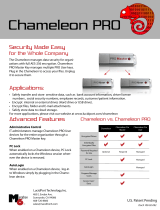
Table of Contents
1. Preface.............................................................................................................6
2. Features...........................................................................................................7
3. Requirements...................................................................................................8
3.1. NET+OS CD ..........................................................................................9
3.1.1. doc.............................................................................................9
3.1.2. Image_12...................................................................................9
3.1.3. install-cygwin1-5-12...................................................................9
3.1.4. tftp..............................................................................................9
3.1.5. debuggers/majic.........................................................................9
3.1.6. debuggers/chameleon ...............................................................9
3.1.7. netos..........................................................................................9
3.1.8. Toolchain ...................................................................................9
3.1.9. uboot..........................................................................................9
4. Installation......................................................................................................10
4.1. Installing Cygwin..................................................................................10
4.2. Installing the GNU Toolchain...............................................................12
4.3. Installing NetOS v6.1...........................................................................13
4.4. Installing HCC EFFS-STD NAND Full Version Upgrade .....................13
4.5. Installing tftp Server.............................................................................13
4.6. Installing debugger software................................................................14
4.6.1. Installing MAJIC debugger software........................................14
4.6.2. Installing Chameleon debugger software.................................16
5. Getting Started...............................................................................................18
5.1. Building a NET+OS Example Application............................................20
5.2. load and execute a NetOS image with UBOOT Bootloader ................22
5.3. Debugging a NetOS image..................................................................23
5.3.1. MAJIC Debugger .....................................................................23
5.3.2. Chameleon Debugger..............................................................24
5.4. About NAND Flash File System...........................................................26
5.4.1. General Information.................................................................26
5.4.2. HCC EFFS-STD NAND Full Version Upgrade.........................28
5.4.3. File System Size & Position.....................................................29
5.4.4. Stress Example........................................................................29
5.4.5. Remote Example .....................................................................31
5.4.5.1. ftp server............................................................................32
5.4.5.2. http server..........................................................................34
5.4.6. Integration of the NAND file system with the C-Library............34
5.5. About NVRAM......................................................................................35
5.5.1. Using A9M9750 Serial EEPROM.............................................35
5.5.2. NetOS using UBOOT parameters............................................36
5.5.3. Example of using eeprom for user applications.......................36
5.6. About Real Time Clock........................................................................36
5.7. About USB...........................................................................................36
5.7.1. USB Device..............................................................................36
5.7.2. USB Host.................................................................................38
5.8. About Serial Ports................................................................................39
5.8.1. NetOS Release 1.1 with A9Vali_0 Base board........................40





















